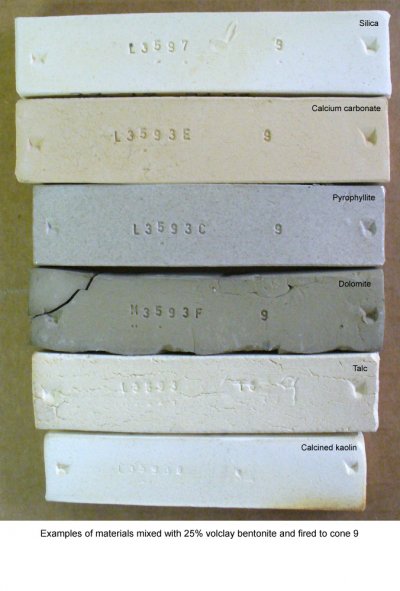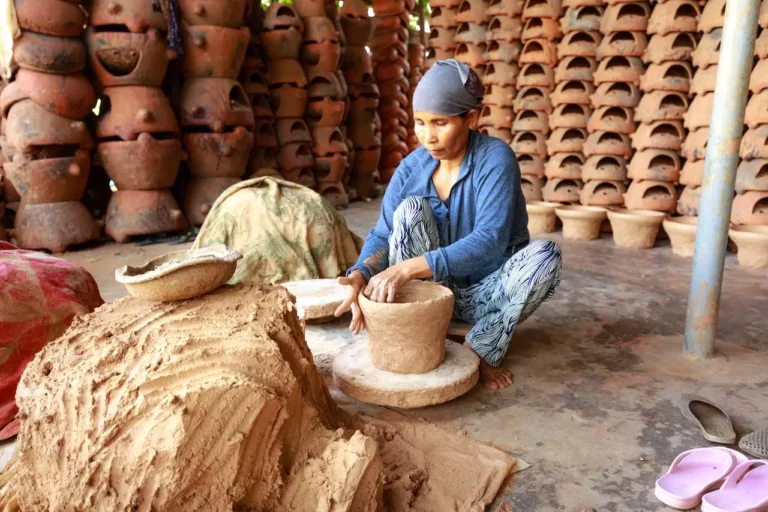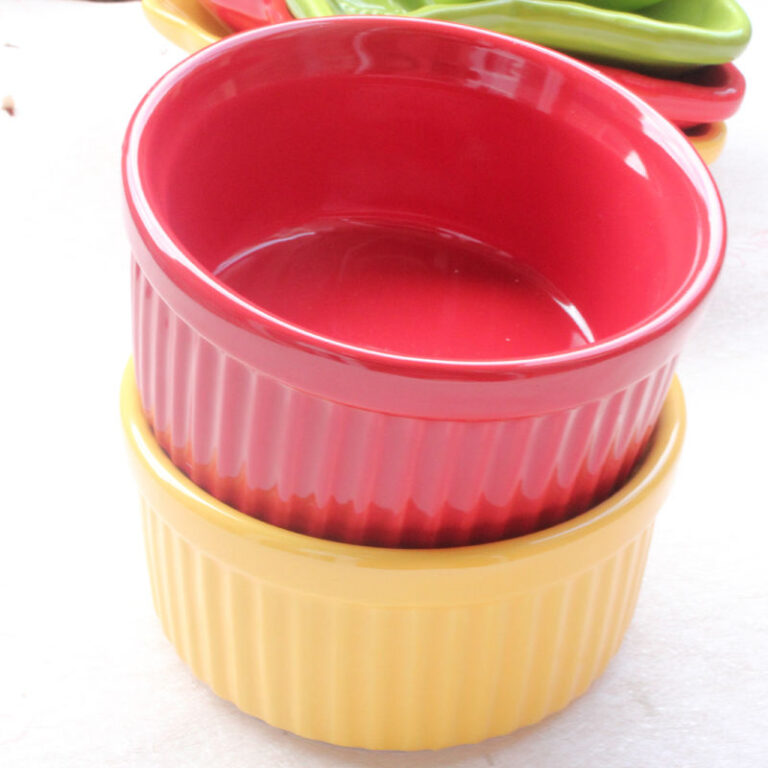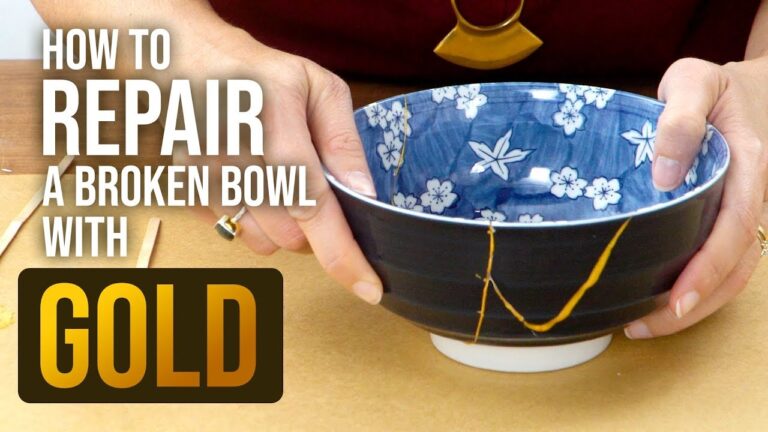Can Bentonite Clay Be Used For Pottery
Pottery is an ancient art form that has been practiced for thousands of years, and it continues to captivate artists and enthusiasts around the world. One crucial component in pottery making is the clay used to create the desired forms and shapes.
Bentonite clay, with its unique properties, has gained popularity in various industries, including ceramics. In this article, we will explore the potential of bentonite clay in pottery, its properties, preparation, application techniques, and the advantages it offers.
Introduction
Pottery is the art of creating functional or decorative objects from clay through shaping, drying, and firing processes. The choice of clay plays a vital role in determining the final outcome of a pottery piece. Bentonite clay, known for its remarkable properties, has found its way into the world of pottery due to its versatility and adaptability.
What is Bentonite Clay?
Bentonite clay is a type of absorbent clay formed from volcanic ash and minerals. It is composed primarily of montmorillonite, a soft phyllosilicate mineral. Bentonite clay is widely known for its ability to absorb water and expand, making it useful in various industrial applications. The unique composition and structure of bentonite clay give it exceptional properties that make it suitable for pottery.
Properties of Bentonite Clay
Bentonite clay possesses several properties that make it desirable for pottery:
1. Absorbency and Plasticity
Bentonite clay has excellent absorbent properties, allowing it to hold water and other substances. This quality contributes to its plasticity, making it easy to shape and mold. The absorbency and plasticity of bentonite clay are advantageous for artists and potters, as it enables them to create intricate forms and details.
2. Reinforcing and Binding Properties
When mixed with other clays or ceramic materials, bentonite clay acts as a binder and reinforcement. It enhances the strength and cohesion of the clay body, reducing the risk of cracking or collapsing during drying and firing.
3. Reduction of Shrinkage and Cracking
One of the challenges in pottery is the shrinkage and cracking of clay during drying and firing. Bentonite clay helps reduce these issues by increasing the clay body’s plasticity and reducing the overall shrinkage rate. This property ensures that the pottery piece maintains its shape and structure throughout the process.
Preparing Bentonite Clay for Pottery
To use bentonite clay effectively in pottery, it is essential to prepare the clay properly. Here are the steps involved in preparing bentonite clay for pottery:
1. Sourcing and Procuring Bentonite Clay
Bentonite clay can be sourced from specialized clay suppliers or pottery supply stores. It is available in various forms, such as powdered or granular. Choosing a reliable supplier ensures the quality and purity of the clay.
2. Cleaning and Filtering the Clay
Before use, it is crucial to clean and filter the bentonite clay to remove impurities and foreign particles. This process helps ensure a smooth and consistent texture, allowing for better workability and performance.
3. Mixing and Conditioning the Clay
Bentonite clay can be mixed with other types of clay to create a clay body suitable for pottery. The ratio of bentonite clay to other clays depends on the desired properties and characteristics. The clay mixture should be thoroughly mixed and conditioned to achieve an even consistency and eliminate air bubbles.
Using Bentonite Clay in Pottery
Bentonite clay offers a range of possibilities when it comes to pottery techniques. Here are some common applications of bentonite clay in pottery:
1. Handbuilding Techniques
Handbuilding involves creating pottery pieces by hand without the use of a pottery wheel. Bentonite clay’s plasticity and workability make it an excellent choice for handbuilding techniques such as pinch pots, coiling, and slab construction.
2. Wheel Throwing Techniques
For potters who prefer using a wheel, bentonite clay can be incorporated into throwing techniques. It enhances the clay’s plasticity, allowing for smoother and more precise shaping on the wheel.
3. Sculpting and Mold Making
Bentonite clay’s unique properties make it suitable for sculpting and mold making. Artists can create intricate and detailed sculptures using bentonite clay due to its ability to hold shape and capture fine textures.
Firing and Finishing Pottery with Bentonite Clay
Once the pottery piece is shaped and dried, it needs to go through the firing process to achieve its final form. Here is how bentonite clay is involved in the firing and finishing stages:
1. Bisque Firing
Bentonite clay helps prevent cracking and warping during the initial bisque firing, which removes the chemically bound water from the clay. It contributes to the overall stability of the pottery piece and prepares it for glazing.
2. Glazing Techniques
During the glazing process, bentonite clay can be used in glaze formulations to enhance the adherence and texture of the glaze. It provides a smooth surface for glazes to adhere to, resulting in vibrant and durable finishes.
3. Final Firing
In the final firing stage, bentonite clay aids in the reduction of shrinkage and warping. It helps maintain the structural integrity of the pottery piece while it undergoes the intense heat of the kiln.
Advantages of Bentonite Clay in Pottery
Using bentonite clay in pottery offers several advantages:
1. Versatility and Adaptability
Bentonite clay is highly versatile and adaptable, making it suitable for a wide range of pottery techniques. It can be used in both handbuilding and wheel throwing, allowing artists to explore various forms and styles.
2. Enhanced Workability
The plasticity and workability of bentonite clay make it easier to shape and mold, even for intricate designs. Artists can achieve finer details and textures due to the clay’s unique properties.
3. Reduction of Warping and Drying Issues
Bentonite clay’s ability to reduce shrinkage and cracking during drying and firing helps maintain the integrity of the pottery piece. It minimizes the risk of warping and enhances the overall durability of the finished product.
Potential Challenges and Considerations
While bentonite clay offers numerous benefits, there are some challenges and considerations to keep in mind:
1. Cost and Availability
Bentonite clay may be more expensive compared to other types of clay, depending on the region and availability. Artists and potters should consider their budget and accessibility when deciding to incorporate bentonite clay into their pottery practice.
2. Environmental Impact
The extraction and processing of bentonite clay can have an environmental impact. It is important to choose suppliers that prioritize sustainable and ethical practices to minimize any negative effects on the environment.
3. Testing and Experimentation
As with any new material, it is crucial to test and experiment with bentonite clay to understand its behavior and how it interacts with other clays and glazes. Artists should be open to trial and error to discover the best techniques and applications for their specific needs.
FAQs
1. Can I mix bentonite clay with other types of clay?
Yes, bentonite clay can be mixed with other clays to create a clay body suitable for pottery. The ratio of bentonite clay to other clays can vary depending on the desired properties and characteristics.
2. Where can I source bentonite clay for pottery?
Bentonite clay can be sourced from specialized clay suppliers or pottery supply stores. It is available in various forms, such as powdered or granular. It is important to choose a reliable supplier to ensure the quality and purity of the clay.
3. Does bentonite clay affect the glazing process?
Bentonite clay can be used in glaze formulations to enhance the adherence and texture of the glaze. It provides a smooth surface for glazes to adhere to, resulting in vibrant and durable finishes.
4. How does bentonite clay help reduce cracking and warping?
Bentonite clay increases the plasticity of the clay body, reducing the overall shrinkage rate during drying and firing. This property helps minimize the risk of cracking and warping, ensuring the pottery piece maintains its shape and structure.
5. Are there any environmental considerations when using bentonite clay?
The extraction and processing of bentonite clay can have an environmental impact. It is important to choose suppliers that prioritize sustainable and ethical practices to minimize any negative effects on the environment.
Conclusion
Bentonite clay presents an exciting opportunity for potters and artists looking to explore new possibilities in their craft. With its unique properties of absorbency, plasticity, and strength, bentonite clay can enhance the workability and durability of pottery pieces. By incorporating bentonite clay into various techniques and stages of pottery making, artists can create stunning and long-lasting artworks.





